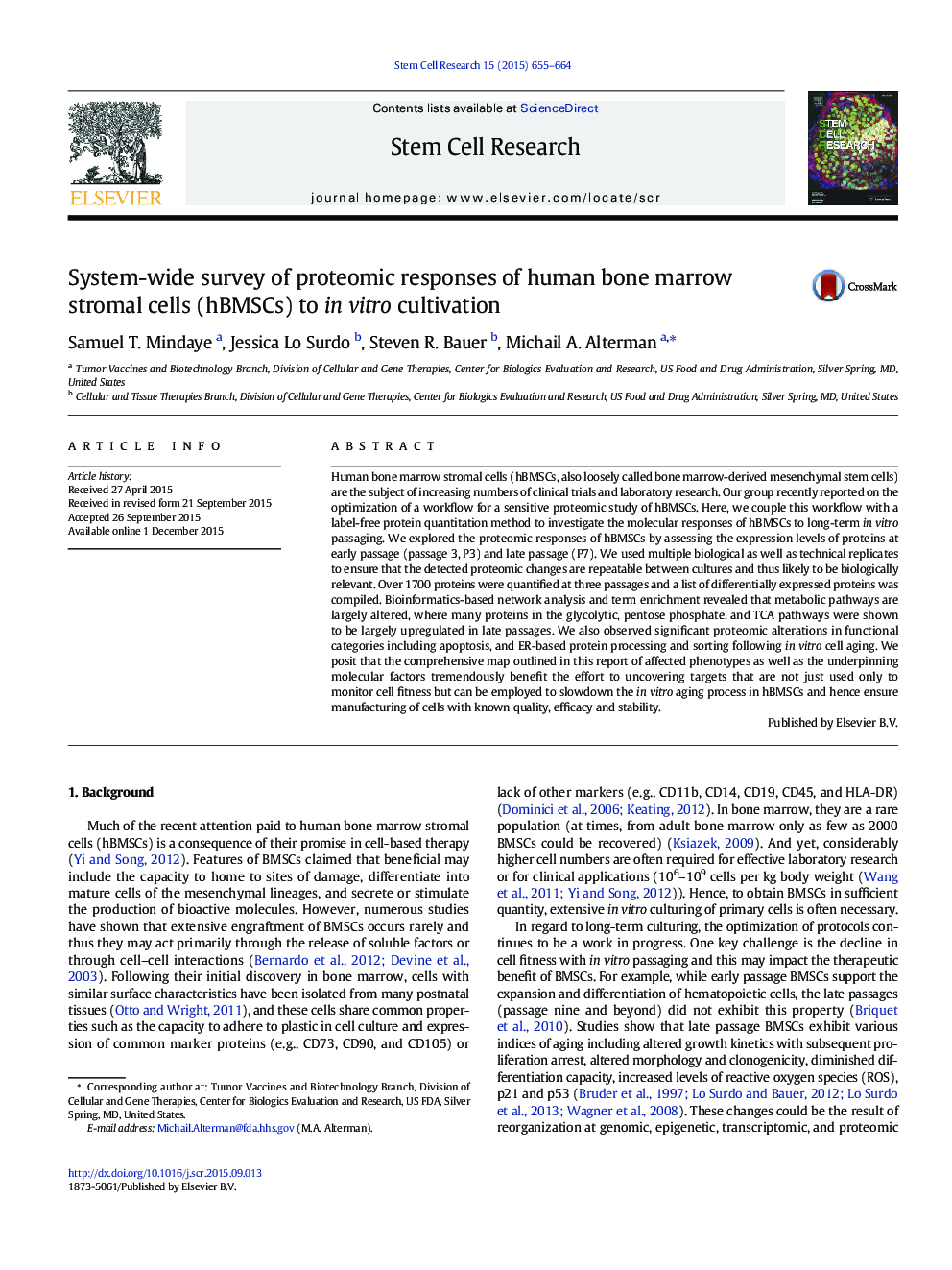| کد مقاله | کد نشریه | سال انتشار | مقاله انگلیسی | نسخه تمام متن |
|---|---|---|---|---|
| 2093910 | 1081985 | 2015 | 10 صفحه PDF | دانلود رایگان |

• Optimized label-free quantitative workflow for proteomics of hBMSCs.
• Over 1700 proteins quantified at three passages and a list of differentially expressed proteins compiled.
• Aging-associated molecular changes of human BMSCs extensively investigated.
• Bioinformatics pathway enrichment and validation of altered translational events
• Aging markers include extensive metabolic rearrangements and induction of apoptotic events.
Human bone marrow stromal cells (hBMSCs, also loosely called bone marrow-derived mesenchymal stem cells) are the subject of increasing numbers of clinical trials and laboratory research. Our group recently reported on the optimization of a workflow for a sensitive proteomic study of hBMSCs. Here, we couple this workflow with a label-free protein quantitation method to investigate the molecular responses of hBMSCs to long-term in vitro passaging. We explored the proteomic responses of hBMSCs by assessing the expression levels of proteins at early passage (passage 3, P3) and late passage (P7). We used multiple biological as well as technical replicates to ensure that the detected proteomic changes are repeatable between cultures and thus likely to be biologically relevant. Over 1700 proteins were quantified at three passages and a list of differentially expressed proteins was compiled. Bioinformatics-based network analysis and term enrichment revealed that metabolic pathways are largely altered, where many proteins in the glycolytic, pentose phosphate, and TCA pathways were shown to be largely upregulated in late passages. We also observed significant proteomic alterations in functional categories including apoptosis, and ER-based protein processing and sorting following in vitro cell aging. We posit that the comprehensive map outlined in this report of affected phenotypes as well as the underpinning molecular factors tremendously benefit the effort to uncovering targets that are not just used only to monitor cell fitness but can be employed to slowdown the in vitro aging process in hBMSCs and hence ensure manufacturing of cells with known quality, efficacy and stability.
Figure optionsDownload high-quality image (148 K)Download as PowerPoint slide
Journal: Stem Cell Research - Volume 15, Issue 3, November 2015, Pages 655–664